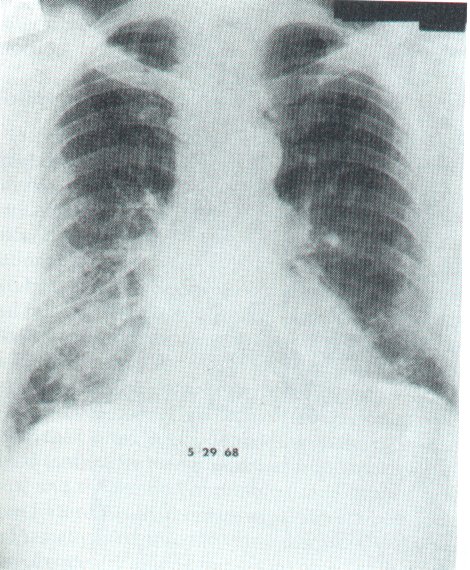
Inhalation of asbestos fibers for 10 years or more may lead to interstial fibrosis that typically begins in the lower lobes and later spreads to the middle and upper lung fields. This fibrosis is associated with a restrictive pattern on pulmonary function testing. The chest x-ray shows linear densities, thickening or calcification of the pleura (pleural plaques), and, in severe cases, honeycombing. Exposure to asbestos also may cause exudative pleural effusions. These effusions are often bloodstained and my be painful. The diagnosis may be elusive if a careful occupational exposure is not obtained. These effusions are benign, but affected persons may later sustain malignant mesotheliomas of the pleura or peritoneum. Unlike pulmonary fibrosis, pleural effusions and mesotheliomas may develop after brief exposures to asbestos, often exposures of 1 to 2 years. Mesotheliomas are not associated with cigarette smoking, but the combination of exposure to asbestosis and cigarette smoking has a multiplicative effect on the risk of development of lung cancer. Exposure to asbestos increases the risk for both adenocarcinoma and squamous cell (but not small cell) carcinoma of the lung; this suggest that lung cancer screening may be useful in selected individuals.
This PA radiograph shows some of the typical findings of asbestosis including a "shaggy heart", pleural plaques and diaphragm calcification.

References: